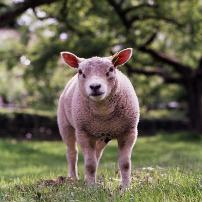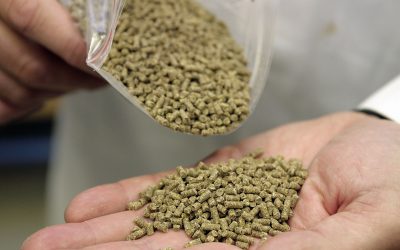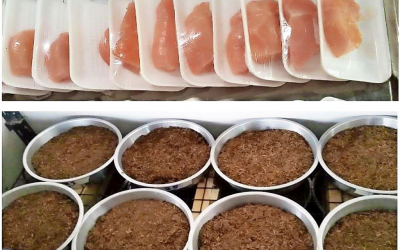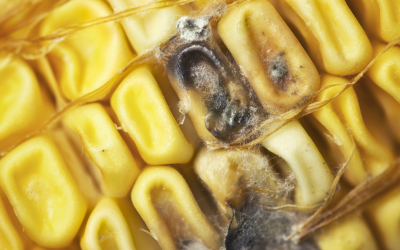Molasweet palatant boosts lamb growth

Replacing molasses with a mimic palatant in a lamb finisher concentrate increased weight gain by 30%, improved feed conversion by 10% and boosted the financial margin by 24%.
In a farm-scale trial, store lambs started the trial at 45 kg on a diet
of ad-lib hay and concentrate. One treatment used concentrate with
100 kg/tonne molasses content, another 40 kg/tonne molasses plus
240 g/tonne of Molasweet palatant. At 60 kg live-weight, finished
lambs were drawn off in three lots after 22, 30 and 50 days of the
trial.
Feed intakes were 1.85 kg/day on the full molasses inclusion
and 2.08 kg/day with palatant. Feed conversion was 5.72 and 5.15
respectively, and weight gain 0.26 and 0.34 kg/day likewise (see
Table 1).
The palatant contains high intensity sweetener and
flavour in powder form, designed to reproduce the taste and smell of molasses,
according to Gavin Raper from the manufacturer, Pancosma. He says its intended
use is where molasses is a high cost ingredient and where reducing its inclusion
rates can lead to handling or logistical advantages.
The trial took place
on the farm of Charles Botha in the Middleburg district of South Africa, to a
protocol designed by Rudolf van der Veen from Allied Nutrition
Neutraceuticals.
Table 1 – Performance data
on lambs from 45kg to 60kg live-weight on a hay plus concentrate finishing
diet
Control |
Treatment
Change
Molasses
100kg/tonne
40kg/tonne
n/a
Molasweet
zero
240g/tonne
n/a
Feed intake (kg/day)
1.85
2.08
+12.4%
Feed conversion (kg feed/kg gain)
5.72
5.15
-10.0%
Weight gain (kg/day)
0.26
0.34
+30.8%
Comparative margin over feed
100%
124%
+24%
Related website:
Pancosma







![[Photo: Natalia Klenova]](https://www.allaboutfeed.net/app/uploads/2020/12/001_587_rb-image-2817996-400x250.jpeg)



